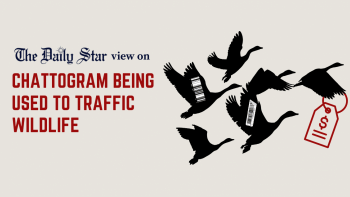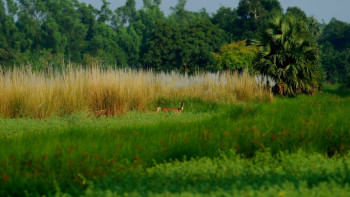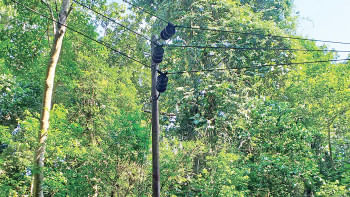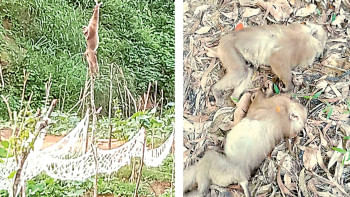We must protect wildlife at any cost

In Bangladesh, nature has been at a crisis point for quite some time, and one only needs to look at the present state of our rivers, forests and hills to understand that. This destructive trend has extended to biodiversity as well. Over the last several decades, there has been a persistent drop in the country's wildlife population. Populations of mammals, birds, amphibians, reptiles and fish are all also shrinking. This is a deeply troubling situation which we must address.
The threat to wildlife has come under renewed scrutiny on this year's World Wildlife Day. According to a report by Prothom Alo, wildlife trade has been going on unabated in many parts of the country. The report cites a study done by a Cambridge University team which mentions 13 districts where illegal trade in live animals and animal parts is thriving. Often wild animals, including endangered species, are caught from these districts and brought to Dhaka and Chattogram. Live animals are most trafficked to neighbouring India and Myanmar, while Thailand, Singapore, China, Malaysia, Vietnam and Laos are also potential destinations.
According to sources, there has been an uptick in wildlife trafficking in recent months, suggesting the involvement of a powerful gang. As well as live animals, animal body parts including meat, bones, teeth, nails, skin and even blood are also reportedly sold or smuggled. The rarer and more endangered the animal, the higher its price. Although police occasionally seize consignments of animals and animal parts, clearly those haven't been enough to put a brake on this lucrative trade. Moreover, while low-level criminals are sometimes arrested in these drives, the ringleaders remain almost always untouched, thanks to the involvement of powerful patrons and lack of political support to stop this trade.
Sadly, trafficking is only a part of the problem facing wildlife in Bangladesh. Often the threat also comes from irresponsible conduct by state officials. For example, not long ago, we have seen how open electrical lines have been allowed to go through the Lawachhara forest, leading to many animals getting electrocuted. At Lawachhara, as well as live wires, wild animals have also been exposed to the risk of being run over by incoming trains. According to an estimate, at least 35 wild animals were killed in train accidents in the last five years at the Lawachara National Park. What's worse, the railway authorities have yet to act even after a month has passed since all trains were instructed to run at a maximum speed of 20 kph to ensure the safety of wildlife. More alarmingly, wild animals are also suffering from increasing habitat loss due to destruction and degradation of forests.
These developments only symptomatise the ongoing neglect of wildlife in Bangladesh. Officially, the government retains the policy of supporting biodiversity conservation, but the reality is totally different. Given the grave, multidimensional risks that wildlife and our natural world face, we need to critically rethink our approach to this issue. We urge the authorities to ensure that all threats to wildlife are eradicated. They must take firmer action in this regard.


 For all latest news, follow The Daily Star's Google News channel.
For all latest news, follow The Daily Star's Google News channel. 










Comments